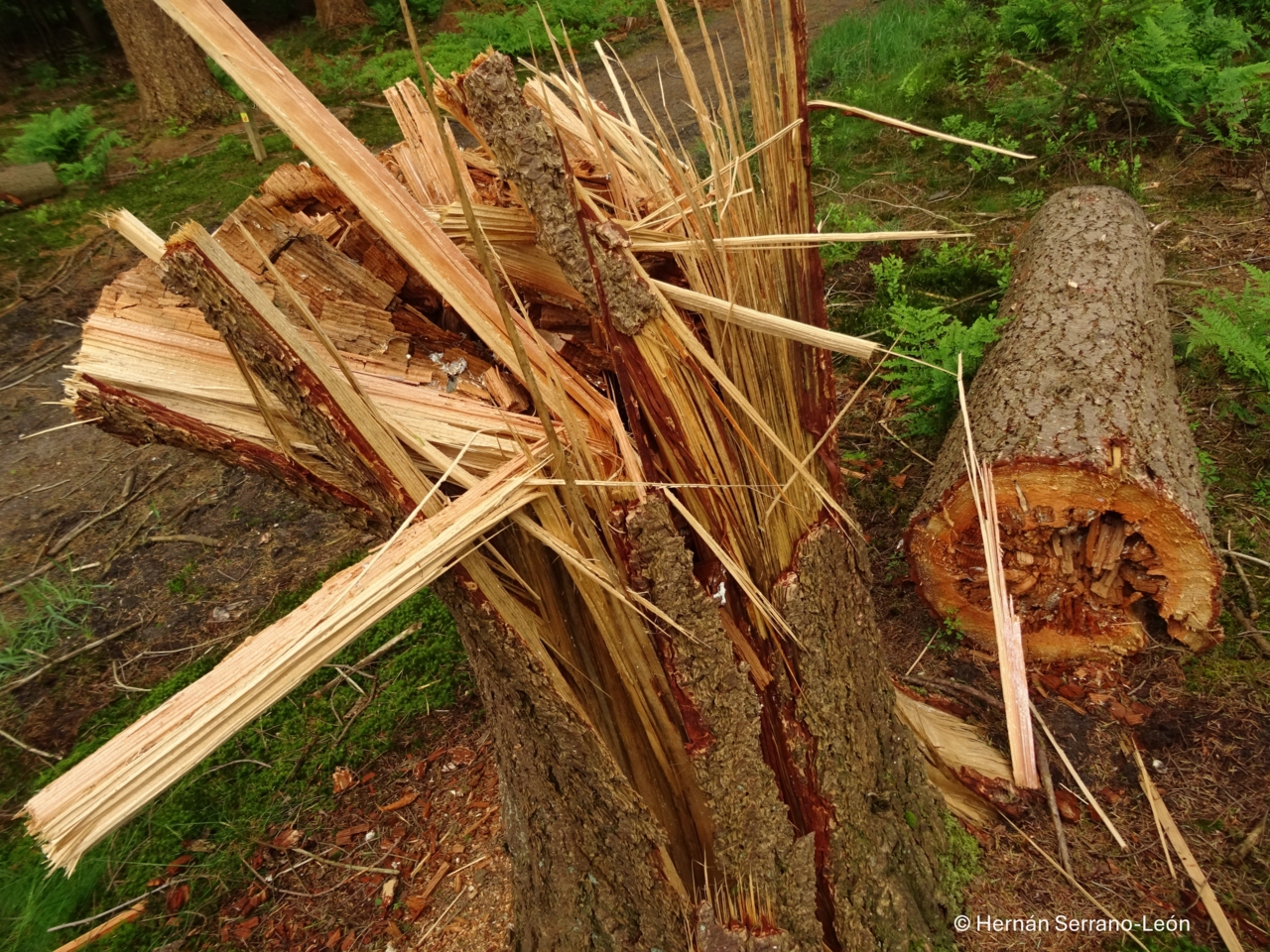Best Practice Knowledge Base
4.3 Creation of microhabitats

Artificial creation of deadwood. Netherlands © Hernán Serrano-León
Specific microhabitats or tree-related microhabitats (TREMs) can be promoted by preserving or introducing specific structural features within trees and the forest floor that can support flora and/or fauna. These microhabitats include cavities, bark fissures, deadwood, and epiphytic plants, among others, which provide essential resources for species such as birds, bats, insects, and fungi. By fostering these microhabitats, restoration efforts can enhance biodiversity, promote ecological resilience, and more closely emulate natural forest conditions, while also acting ecological indicators. Implementing this approach requires careful planning to balance conservation objectives with other forest management goals.
I. Guidelines
| Nº | Title | Author | Year | Focus Region | Language | Summary | Link |
| 1 | Field Guide to Northern Tree-related Microhabitats | Bütler et al. | 2024 | Northern Europe | English | Descriptions and size limits for the inventory of tree-related microhabitats in boreal and hemiboreal forests of Europe and North America | https://www.dora.lib4ri.ch/wsl/islandora/object/wsl:36432/datastream/PDF |
| 2 | Field Guide to Tree-related Microhabitats | Bütler et al. | 2020 | Central Europe | English | Descriptions and size limits for the inventory of tree-related microhabitats in temperate forests in Europe. | https://www.dora.lib4ri.ch/wsl/islandora/object/wsl:25942/datastream/PDF |
| 3 | Know, protect and promote habitat trees | Bütler et al. | 2021 | Europe | English | Fact sheet with a summary of habitat trees and management guidelines. | https://www.dora.lib4ri.ch/wsl/islandora/object/wsl%3A25943/datastream/PDF/B%C3%BCtler-2021-Know%2C_protect_and_promote_habitat_trees-%28published_version%29.pdf |
II. Books or book chapters
| Nº | Title | Author | Chapter | Chapter author | Year | Focus region | Language | Summary | Link |
| 1 | Integrative approaches as an opportunity for the conservation of forest biodiversity | Kraus & Krumm | 2.1 Habitat trees: key elements for forest biodiversity | Bütler et al. | 2013 | Europe | English | Microhabitats of habitat trees and recommendations for management. | https://research.edgehill.ac.uk/ws/files/20073515/InFocus-Integrate-complete-final.pdf |
| 2 | Biodiversity in Dead Wood | Stokland et al. | Microhabitats | Siitonen | 2012 | World | English | Description of a range of microhabitats in deadwood and decaying trees, which could be replicated through management | https://www.cambridge.org/core/books/biodiversity-in-dead-wood/32EA8DA79A503B95795384FFA5BC993D |
| 3 | Europe's Changing Woods and Forests: From Wildwood to Managed Landscapes | Kirby and Watkins | Importance of veteran trees for saproxylic insects | Siitonen and Ranius | 2015 | World | English | Description of a range of microhabitats in deadwood and decaying trees, which could be replicated through management |
III. Scientific articles
| Nº | Title | Author | Year | Focus region | Language | Type | Summary | Link |
| 1 | Evaluating retention forestry 10 years after its introduction in temperate forests regarding the provision of tree-related microhabitats and dead wood | Großmann et al. | 2023 | Germany | English | Observational study | Effects of retention forestry on microhabitat and deadwood abundance | https://doi.org/10.1007/s10342-023-01581-w |
| 2 | The Use of Tree-Related Microhabitats as Forest Biodiversity Indicators and to Guide Integrated Forest Management | Asbeck et al. | 2021 | Europe | English | Narrative review | Review on the suitability of tree-related microhabitats as biodiversity indicator in retention forestry, and its drivers | https://doi.org/10.1007/s40725-020-00132-5 |
| 4 | Dead Better than Alive—The Case of Retention Trees and Tree-Related Microhabitats in Young Stands of Hemiboreal Forests in Latvia | Jansone et al. | 2023 | Latvia | English | Experiment | Study on microhabitat abundance and composition on retention trees in 20 young stands in Latvia | https://doi.org/10.3390/f14101949 |
| 5 | Resolving the trade-off between production and biodiversity conservation in integrated forest management: comparing tree selection practices of foresters and conservationists | Cosyns et al. | 2020 | Germany | English | Experiment | Comparison of conservationists and foresters performing a tree selection exercise and the effect on habitat trees | https://doi.org/10.1007/s10531-020-02046-x |
| 6 | Tree-related microhabitats are similar in mountain forests of Europe and North America and their occurrence may be explained by tree functional groups | Asbeck et al. | 2020 | Central Europe, North America | English | Observational study | Studies the drivers of drivers of TreMs occurence | https://doi.org/10.1007/s00468-020-02017-3 |
| 7 | How individual tree characteristics and forest management influence occurrence and richness of tree-related microhabitats in Mediterranean mountain forests | Santopuoli et al. | 2022 | Italy | English | Observational study | Impacts of forest structure and management alternatives on the occurrence and richness of Tree-related Microhabitats | https://doi.org/10.1016/j.foreco.2021.119780 |
| 8 | Factors influencing the rate of formation of tree-related microhabitats and implications for biodiversity conservation and forest management | Courbaud et al. | 2021 | Europe | English | Observational study | Studies the drivers of tree-related microhabitat abundance | https://doi.org/10.1111/1365-2664.14068 |
| 9 | Combined retention of large living and dead trees can improve provision of tree-related microhabitats in Central European montane forests | Spînu et al. | 2022 | Germany | English | Observational study | Comparison of the tree-related microhabitats on living and dead trees to determine their drivers | https://doi.org/10.1007/s10342-022-01493-1 |

